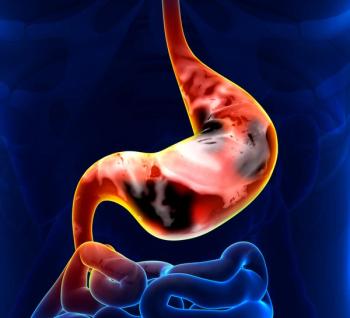
Navtemadlin Shows Efficacy, Safety in Relapsed/Refractory Myelofibrosis
Navtemadlin yields improvements in symptom score reductions ad spleen volume reduction among patients with relapsed/refractory myelofibrosis.
Safety and efficacy were reported among patients with relapsed/refractory myelofibrosis who received treatment with navtemadlin, which yielded improvements in outcomes vs best available therapy (BAT), according to findings from the phase 3 BOREAS study (NCT03662126) presented at the
Data showed that at a data cut-off of September 30, 2024, regarding spleen volume reduction by 35% (SVR35), patients treated with navtemadlin experienced a 3-fold increase in SVR35 (15%; n = 18/123) vs BAT (5%; n = 3/60) at week 24.
Concerning total symptom score reductions of at least 50% (TSS50), patients treated with navtemadlin saw a 2-fold increase in TSS50 (24%; n = 30/123) compared with BAT (12%; n = 7/60) at week 24. In the intention-to-treat population, the mean absolute TSS change from baseline to week 24 was -4.6 in the navtemadlin group compared with 0.9 in the BAT group (P = .0078; least square mean difference -5.5; 95% CI, -9.6 to -1.5).
In the navtemadlin cohort, treatment-emergent adverse effects (TEAEs) included gastrointestinal (GI) events such as nausea (any grade, 42%; grade 3/4, 4%), diarrhea (41%; 6%), and vomiting (25%; 2%). These had median times to onset of 4 (range, 1-530), 8 (range, 1-384), and 30 (range, 1-477) days, respectively, and had median times to resolution of 9 (range, 1-348), 7 (range, 1-338), and 4 (range, 1-24) days.
Hematologic TEAEs of note included anemia (any grade, 36%; grade 3/4 29%), neutropenia (30%; 25%), and thrombocytopenia (46%; 37%). The median times to onset were 30 (range, 1-289), 29 (range, 8-176), and 29 (range, 8-253) days, respectively, and times to resolution of 8 (range, 1-369), 9 (range, 2-169), and 14 (range, 1-387) days, respectively.
“Expecting GI toxicity, this is mostly grade 1 and 2, … rarely grade 3 and 4, rarely a reason for discontinuation,” said John O. Mascarenhas, MD, of the Tisch Cancer Institute, Icahn School of Medicine at Mount Sinai, New York, New York, in a presentation of the data at the conference.“Very importantly, the time to onset for GI toxicity was pretty predictable. The drug is dosed days 1 to 7 out of a 28-day cycle, [and] you almost always would see the GI toxicity days two to nine. But very important, if you look at time to resolution, the measuring in days, 9, 4, and 7. So, this is reversible toxicity, very importantly. In a drug that's given repeatedly, this is reversible toxicity, not [felt] through the constant 28 days of the cycle. [It’s the] same thing with hematologic toxicity, [which was] very predictable in its occurrence and very fleeting in its duration.”
Among its 183 participating patients, they were a median of 48.1 (range, 0.4-368.3) months from initial diagnosis in the navtemadlin cohort and 45.2 (range, 5-292.3) months from diagnosis in the BAT cohort. They had received a median of 1 prior line of therapy in both cohorts (ranges, 1-6 and 1-5, respectively).
“The BOREAS study is undoubtedly the first study in the relapsed, refractory setting as a single-agent, JAK inhibitor failure to show results,” Mascarenhas concluded. “Here today, [with these] clinical results, I think you'll see that there is clinically relevant efficacy and safety ... [with the] tripling of SVR35 and doubling of TSS50.
“And, the next step for the evaluation of navtemadlin is going to be the [phase 3] POIESIS study [NCT06479135]...This is going to be evaluating navtemadlin in the sub-optimal responders to see if we can move the drug even further up in its development pathway and benefit patients earlier on.”
Reference
Mascarenhas JO, Popov VM, Mohan S, et al., Results from the Randomized, Multicenter, Global Phase 3 BOREAS Study: Navtemadlin Versus Best Available Therapy in JAK Inhibitor Relapsed/Refractory Myelofibrosis, Presented at: 2024 American Society of Hematology Annual Meeting; December 7-10, 2024; San Diego, California. Abstract 1000.
Newsletter
Stay up to date on recent advances in the multidisciplinary approach to cancer.


















































































